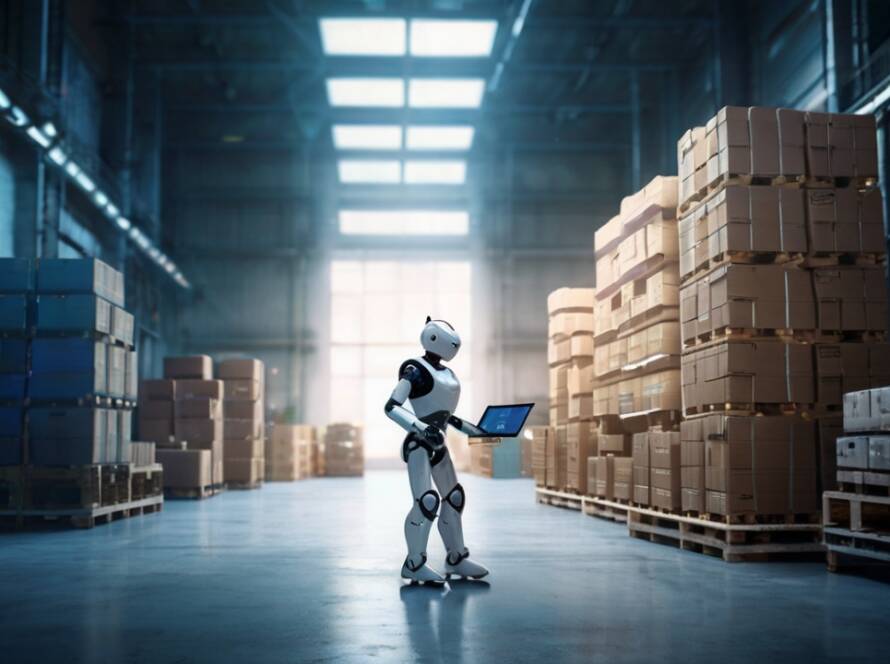Only in an ideal world do deliveries happen on time, every time. Shelves are always stocked, and goods flow seamlessly across continents. That’s what global logistics should be. But the reality is quite deceiving. Unexpected events, like natural disasters, pandemics, or political unrest, can disrupt this intricate process, causing delays and headaches for businesses and consumers alike.
However, there’s good news. Logistics companies can withstand these storms by building resilience – the ability to bounce back from disruptions and keep goods moving. Here’s how:
The art of the unpredictable: Scenario Planning
While we can’t predict exactly when or how these disruptions will happen, businesses can prepare for a range of future events. Scenario planning is a what-if, strategic thinking method that encourages businesses to imagine possible ranges of disruptive events – from cyber terrorism to trade wars – and then develop response strategies that match each scenario.
One perfect example to show the necessity of scenario planning is the blocking incident of the Suez Canal in 2021. The Suez Canal blockage in March 2021 caused widespread disruption to global shipping. The companies that had not done scenario planning were scrambling and floundering. Logistics companies without a “what-if” plan were caught off guard. The sudden disruption created a surge in fuel costs (due to longer routes) and additional fees associated with rerouting or holding shipments. Companies without contingency budgets faced financial strain from absorbing these unexpected expenses. Unprepared logistics companies had difficulty communicating effectively with clients during the Suez Canal blockage.
Follow the data: Information Lights the Way When the Future is Uncertain
Real-time data offers businesses a clear path for steering around the rocks and reefs of disruptive obstacles. Strong data analytics software applications can help you monitor inventory levels, pinpoint the location of finished goods within the transportation cycle, and identify the next bottleneck before it becomes a costly problem.
UPS, for example, developed a platform called ORION (On-Road Integrated Optimization and Navigation) that uses real-time data to streamline the delivery routes for its drivers. ORION constantly analyzes a variety of variables including traffic patterns, weather predictions, and local traffic regulations. If unexpected events like natural disasters or a pandemic occur, UPS can adjust its delivery plans based on ORION’s real-time data insights. This enables the company to maintain the continuity of its own operations while also using its transportation resources to support communities in crisis.
Resilience is contagious: Partner with Your Ecosystem
Businesses don’t operate in isolation. Close working relationships with supply chain stakeholders – from manufacturers to transportation providers – form a collaborative ecosystem. Open lines of communication enable partners to share data and disruptors in real-time.
A true story that highlights the benefits of strong relationships and transparency in the logistics industry took place in March 2024 when the Francis Scott Key Bridge in Baltimore collapsed. A container ship collision caused the accident, and the resulting temporary closure of the Port of Baltimore – one of the East Coast’s busiest ports – forced logistics companies to work together to reroute many shipments around the area through other ports like Norfolk, Charleston, and Savannah to avoid further delays. The temporary closure diverted about 3600 trucks per day, along with a lot of work to handle the demand at these other ports and on the regional highway systems. Cooperation between many logistics companies helped avoid even greater delays and negative economic effects.
Technology as Your Shield: Invest in Technology
Technology can be used in innovative ways to address complex issues of resilience in logistics. For example, cloud-based Technology can ensure that data access is available even if the physical infrastructure is attacked and damaged.
In 2017, the “NotPetya” cyberattack infected computer systems across the globe. Maersk, one of the world’s largest shipping companies by capacity, was among those affected. Ports, terminals, and warehouses were forced to halt operations, causing widespread delays and costing the company millions. To restore operations, Maersk made a calculated risk that paid off: They bet on the cloud. Their robust cloud-based technology allowed for the faster recovery and restoration of business-critical systems than would have been possible with backups alone.
The Power of Choice: Adapting to Changing Circumstances
Rigid logistics systems are incapable of reacting well in times of disruption. Organizations that instead concentrate on their ability to be agile and flexible can react much more swiftly to shifts in the market.
In 2020, the Chinese government implemented a cascade of trade sanctions on Australian exported commodities, which had a profound effect on Australian beef exporters. Acknowledging the vulnerability, Australia began a diversification strategy to lessen its dependence on Chinese markets. They enhanced and diversified trading relationships with traditional partners, such as Japan, South Korea, and the United States. The Australian government also made a concerted effort to develop new markets for Australian beef, especially in Southeast Asia and the Middle East. By building a diverse clientele, Australia reduced the risk of any forthcoming trade sanctions severely impacting the Australian beef industry.
The Resilient Culture: The Art of Constant Preparedness
Resilience isn’t a one-time effort – it’s a practice. Training exercises enable employees to prepare for the unforeseen and build their collective experience to handle disruption. What’s more, a culture of open communication empowers employees to bring potential issues to the surface, thereby speeding up reaction time and limiting the impact.
Japanese logistics companies exemplify how a resilience culture and art of preparedness benefit them in a country frequently struck by earthquakes. Japanese logistics firms are very proactive when it comes to disaster management, particularly earthquakes. They organize regular training sessions around earthquake preparedness to ensure their workforce is adequately prepared in the event of a major quake. Simulated exercises as well as scenario training give employees hands-on experience and confidence. In addition, Japanese logistics companies cultivate an atmosphere in which open communication is strongly prompted, and where employees can point out issues in the early stages. They can identify shortfalls and implement countermeasures before an earthquake happens. Examples of such countermeasures include earthquake-proof facilities and infrastructure investments and designating alternative transport routes.
Conclusion: Many Hands Make Light Work
The world of global logistics networks is in constant motion. Disruption is mandatory; devastation is optional. With proactive planning, data analysis, collaboration, technology, agility, and resilient culture, logistics providers can build a foundation strong enough to weather any storm. In a world of uncertainty, resilience isn’t a choice – it’s the foundation upon which successful and sustainable logistics operations must be built.



